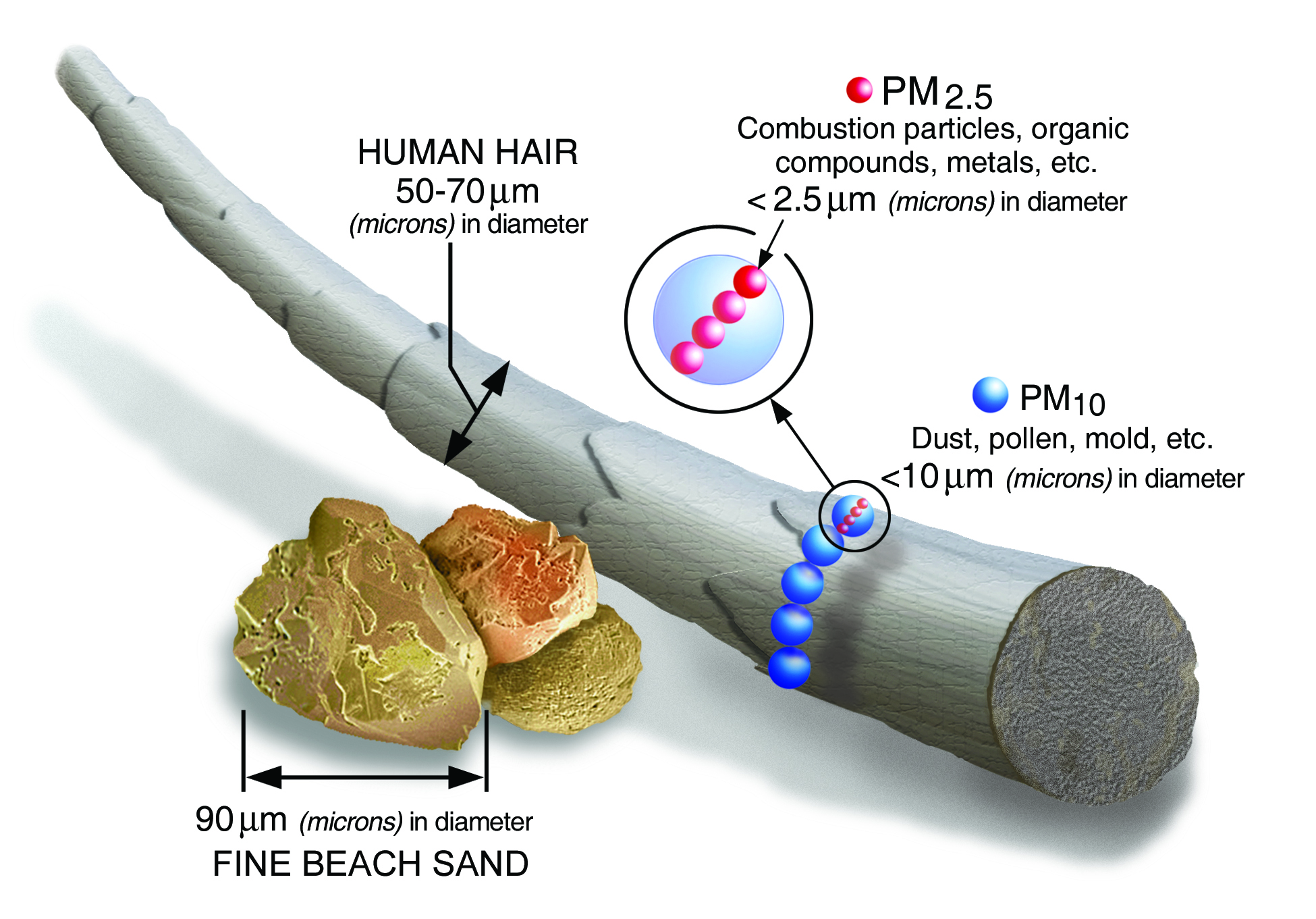Air pollution : A silent killer.

We are all exposed to air pollution on a regular basis. The World Health Organisation (WHO) estimates that at least 9 in 10 people globally breathe air containing pollutants that exceed levels stipulated in WHO guidelines. The WHO also estimates that indoor and outdoor (ambient) air pollution kills at least 7 million people worldwide every single year. Those are scary numbers, which make you wonder why alot is not being done to drastically improve the quality of air we breathe.
Outdoor or ambient air pollution is estimated to cause 4.2 million deaths globally every year. Most deaths from outdoor air pollution is primarily due to exposure to particulate matter (PM) in the air. Particulate matter is a complex mixture of solid and liquid particles of organic and inorganic substances suspended in the air. The major components of particulate matter include ammonia, black carbon, mineral dust, sulfates and water.
The number of deaths from air pollution is disproportionately higher in low and middle income countries compared to the more developed, high income countries primarily due to lax or non-existent environmental regulations, poverty and inadequate healthcare services in the poorer countries.
PM is usually formed due to incomplete combustion of carbon and the main culprits are power generation plants running on diesel and other fossil fuels, vehicles, waste burning, mining activities, refineries etc. Considering the pervasiveness of the above listed sources of particulate matter in the air, it should come as no surprise that the poorer countries have a bigger disease and death burden from PM exposure. The WHO estimates that 91% of the 4.2 million deaths due to outdoor air pollution occurred in low and middle income countries. World Health Organisation Fact Sheets
What are the health implications of breathing in particulate matter in the air?
When we are exposed to toxic substances in our environment, our bodies react in subtle ways to alert us. For instance most people (myself included) develop itchy eyes when passing by chemical plants, due to the high levels of gases like Sulfur dioxide and Nitrogen dioxide in the air. The sheer irritation of the eyes forces you to put a healthy distance between you and the source of the irritation.
While this physical protective mechanism is useful, it is also pretty limited especially when dealing with particulate matter. Particulate matter is able to pass freely into the lungs and sometimes it can even penetrate the lung tissue and enter the bloodstream. All this can happen over period of months or even years before visible signs are observed. Fine particulate matter has a diameter of 2.5 microns or less while coarse particulate matter has a diameter of 10 microns or less. To put those numbers into perspective, the human hair has a diameter ranging from 17 microns to 181 microns.

Credit : U.S.E.P.A
A study on the Acute Exposure to Diesel-Biodiesel Particulate Matter showed that mice treated with particulate matter (obtained from the exhaust pipes of diesel engines) through intranasal instillation over a period of 5 days had massive deposits of particulate matter in their lungs compared to the control groups. The accumulation of PM deposits in the lungs of the mice resulted in significant increase in macrophages in the lungs, resulting in inflammation and production of free radicals in the lung tissue. In short, it was bad news for the mice in the experiment.
NOTE => Macrophages are usually deployed to mop up foreign invaders that enter the body. This is a good thing but too much of it could trigger inflammatory disorders.
Other studies done on humans have established a solid link between exposure to particulate matter and the development of diseases like stroke, lung cancer, respiratory diseases and cardiovascular diseases. A review of studies from multiple countries in the world found a significant association between short term and long term exposure to particulate matter and hypertension. Link to the article
Possible Interventions to Minimize our Exposure to Particulate Matter in the air.
-
By far the best intervention would involve reducing or even eliminating emissions at the source. We have to rethink our policies on waste management, power generation, mining, transportation etc. We need tighter regulatory restrictions on automobile manufacturers, energy companies, chemical companies, etc. with regards to emissions.
-
Low income households in poor countries should be given more access to cleaner and affordable technology. I suspect that most people would not opt to burn wood every time they have to cook if they had cleaner alternatives that were affordable.
-
Intervention measures such as facemasks, respirators, behaviour change and high-efficiency particulate arrestance (HEPA) air filters have been proposed widely. However a Review of Individual and Household-level Interventions to Reduce Air Pollution and Health Risks suggested that air filters may be the optimal option.
These interventions work best when they complement emission reduction efforts that benefit entire communities.
Comments
Post a Comment